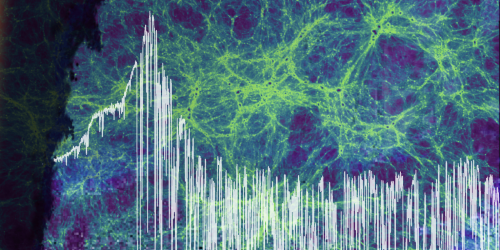Tension for a Hubble-Tension Solution
The Hubble tension is a discrepancy between the results of two methods for determining the cosmic-expansion rate. One solution to this tension is to assume that there was a spike in the amount of dark energy early in the Universe’s history (see Synopsis: Dark Energy Solution for Hubble Tension). However, there could be unwanted effects from “early dark energy,” such as a change in the growth rate of galaxies and other large-scale structures. Now Samuel Goldstein from Columbia University and his colleagues find that the early-dark-energy scenario could also lead to a mismatch between predictions and observations of a series of quasar-spectra absorption lines, collectively known as the Lyman- forest [1].
The Lyman- -forest lines come from the absorption of light from quasars by clumps of hydrogen gas lying along the line of sight to these bright quasistellar objects. Cosmological models can predict the spatial distribution of hydrogen clumps—that is, how many clumps of a certain size there should be within a certain volume. And those predictions can be compared to Lyman- -forest data. Goldstein and his colleagues performed such a comparison using a model with early dark energy.
The researchers varied the density of early dark energy while also tuning various cosmological parameters, including the density of dark matter and the strength of primordial-matter fluctuations. To match current Lyman- observations, the team’s model required that early dark energy be less than 3% of the early Universe’s energy budget, which is far below the 10% assumed in Hubble-tension-resolving scenarios. The results are “the most stringent constraints on early dark energy to date,” Goldstein says.
–Michael Schirber
Michael Schirber is a Corresponding Editor for Physics Magazine based in Lyon, France.
References
- S. Goldstein et al., “Canonical Hubble-tension-resolving early dark energy cosmologies are inconsistent with the Lyman- forest,” Phys. Rev. Lett. 131, 201001 (2023).




